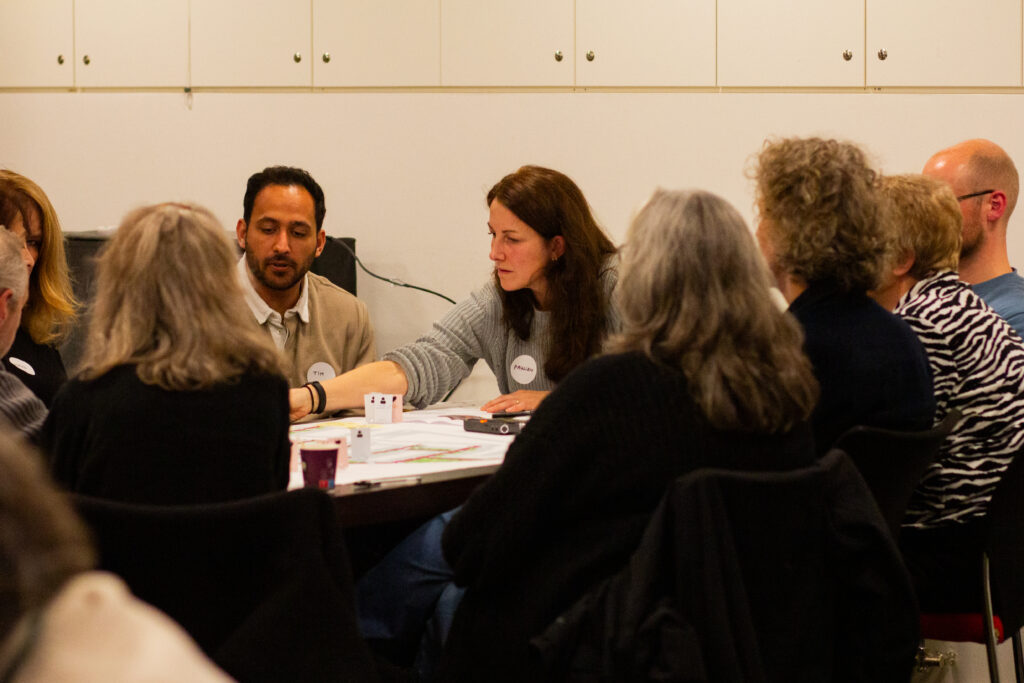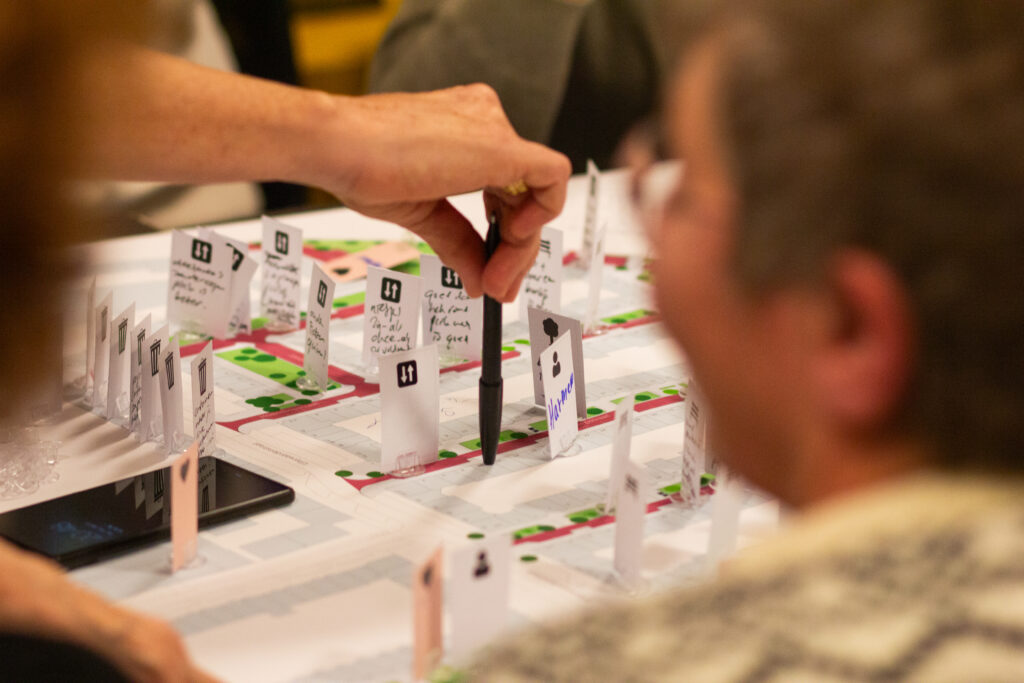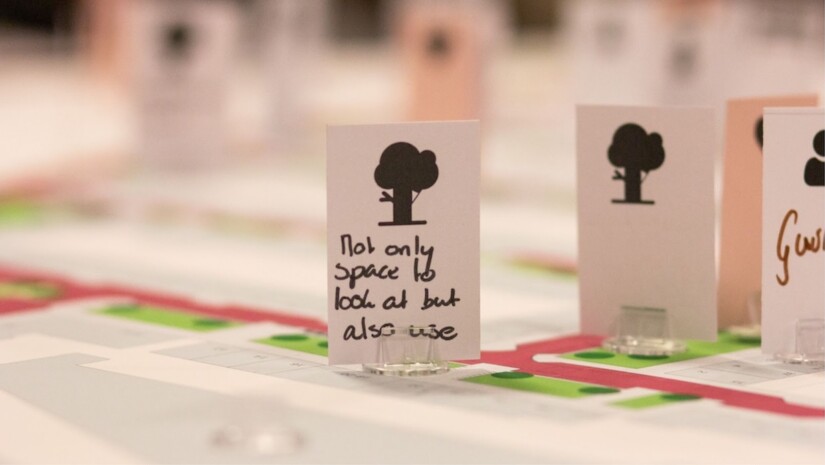The municipality of Amsterdam is working to improve public spaces in a neighbourhood in the East of the city while also enhancing climate resilience and social cohesion in the area. Plans include creating additional space for pedestrians and cyclists, and areas for play and social gatherings. The redesign project addresses improvements to sidewalks, bike lanes, greenery and the sewer system. These improvements are necessary because heavy rain showers often lead to poor drainage, and the soil becomes too dry during hot periods with little precipitation. By redesigning the streets, these issues can be effectively addressed.
Community participation is a valuable opportunity to raise awareness of how these changes will impact residents. It’s also a way to strengthen and build relationships and work together as a community to make the most of the new possibilities while overcoming any challenges.

Capturing the stories from the neighbourhood
We organised two Streetlab sessions in the local community centre to discuss the redesign of the streets. 53 residents joined and contributed to dynamic group conversations. As facilitators of these conversations, we ensure that we gather detailed and structured documentation to conduct a thorough analysis based on the stories and experiences gathered from all perspectives – from people walking down the street as pedestrians and cyclists, and from local shop owners, residents and visitors to the neighbourhood.
These stories from different perspectives about the shared use of urban space are exactly the kind of data we and the design team of the municipality are looking for. Visual aids, such as a large map of the neighbourhood and smaller pictographic cards with important elements in the public space, help to elicit these stories and explore problem areas. Not surprisingly, by bringing together the perspectives of different ‘actors’, all sharing the same space, tensions and conflicts of interest also come to the surface. These are all valid as input for the overall consideration of the final design and implementation.

Two perspectives to the same challenge
In the analysis and reporting stage, we considered and presented two perspectives: one from the residents and another from the municipality. The first is often more holistic, based on integrated experiences of walking, cycling, driving, playing and meeting others in the area. The second perspective is more organised by the specific teams connected to the implementation, such as initial design, long-term maintenance and underlying policies. To this purpose, we created two documents: one to reflect the outcomes of our conversations with people who live, work, or visit the neighbourhood. The second document is designed to assist the municipality in discussing and deciding on the next steps and modifications to the original design.
Encouraging residents to envision how public spaces should look and how they can be used
STBY has a long track record of supporting public space redesign projects by the municipality of Amsterdam with Streetlabs involving residents and local businesses. Some of these projects focused on opportunities to improve bicycle parking in specific areas. Other projects focused on opportunities to create more pedestrian space, or on redesigning a particular square. More and more of these projects also look at making the city more climate resilient.
Want to learn more about our Streetlab method? For more information about the Street Lab Method and examples of the projects, see the extensive case study on the website about Key Enabling Methodologies for creative professionals (in Dutch).
